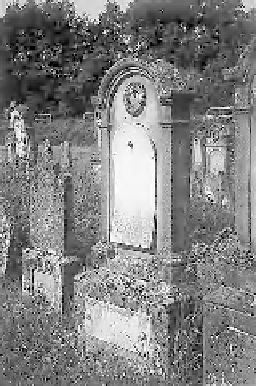Environmental Engineering Reference
In-Depth Information
Calcite expands in the same way as quartz as temperature increases, but this only
occurs in directions parallel to the c axis. Along directions perpendicular to the c
axis, calcite shrinks. This anisotropy in very low porous calcitic crystalline marbles
induces stresses that initiate a specific microfracturation, even at temperatures below
100°C.
These stones are made of quite large crystals (100 µm to several mm) arranged
without any porous binder. Stresses develop dramatically, being all the more
dramatic as the crystallographic axes are orientated in random directions. Frost and
salt damage may increase the degradation of the items, leading in some cases to
impressive deformations of marble plates (see Figure 8.11).
Figure 8.11.
Deformation of the plates of two marble steles in
Sélestat Jewish cemetery, France (19th century)
During a fire, if the temperature reaches 800°C, calcite (CaCO
3
) at the surface of
the stone transforms into quick lime (CaO). This layer behaves as an insulation
against excessive temperature increase [WIN 94], but after hydration and
transformation into portlandite [Ca(OH)
2
], the layer is easily solubilized and
eliminated by water.
Iron is present in almost all stones at very low levels, as oxides and hydroxides
[FeO, Fe
2
O
3
, Fe(OH)
2
] and/or carbonates (FeCO
3
). During a fire, the temperature
increase induces an irreversible color change due to the formation of hematite
(Fe
2
O
3
).


